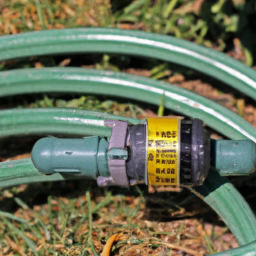Garden Hose Length Which Unit Is Best
Which Unit Is Best To Measure The Length Of A Garden Hose
Which Unit Is Best To Measure The Length Of A Garden Hose
Making an educated purchase decision when it comes to buying a new garden hose is heavily dependent on understanding how to accurately measure the length of a garden hose. There are a few key tips to consider while measuring, as well as a few different units of measure. Fortunately, it doesn't have to be an overly complicated process.
Length Variations
When we talk about length of a hose, it's important to understand that hoses may differ in overall length due to variations in an individual unit's materials, stretching of the unit, storage, temperature, and other elements. As a result, an estimated measurement of the length should not be taken as an exact measurement.
Tips for Measuring
There are a few tips that you may find helpful when attempting to measure the length of a garden hose. First, measurements should be taken when the hose is lying flat along the ground, which makes it much easier to get an accurate picture of the overall length. Second, use a measuring tape, ruler, or even a piece of string and a ruler to find the exact length of the hose. Lastly, make sure to include any knobs or connecting pieces when measuring, as those should also be taken into account for an accurate overall length.
Units of Measurement
When measuring the length of a garden hose, it's important to understand the various units of measurement that can be used. The most common measurements for garden hoses include feet, yards, and meters. The most accurate measurement will usually be in feet.
Feet
For most garden hose lengths, feet will be the most accurate measurement. A common hose may range in length from 25 feet to 100 feet. When measuring, keep in mind that the best way to get an accurate value is to measure the length of the actual hose, not the outer packaging.
Yards
When using yards as a unit of measurement, the measurements will be in either one-quarter-yard or one-third-yard increments. Unlike feet, this is an estimation rather than an exact measurement. Shopping for a hose based on yard measurements may not be the most practical due to the high level of variation.
Meters
Meters are the least accurate out of the three units of measurement. Even when shopping for hoses based on meters, the measurement may not be completely exact. This is because of the various materials, stretching, and temperature level of each individual garden hose.
Brief Recap
When it comes to measuring the length of a garden hose, make sure to remember that due to variations in materials, stretching, and other elements, any measurement should be taken as an estimation rather than an exact value. In addition, make sure to use a measuring tape or ruler along the flat ground to get the most accurate length no matter the unit of measure. The three most common units of measure for garden hoses are feet, yards, and meters. Feet will be the most accurate out of the three, however, yard measurements will vary due to the various sizes and meter measurements are not the most accurate.
Looking Ahead
Now that you understand the basics of measuring the length of a garden hose with different units of measure, you can make a more informed decision when it comes to shopping for a new hose. Before deciding on a unit of measure, make sure to think about what will be most practical for you and what measurement is most accurate.

Previous Page